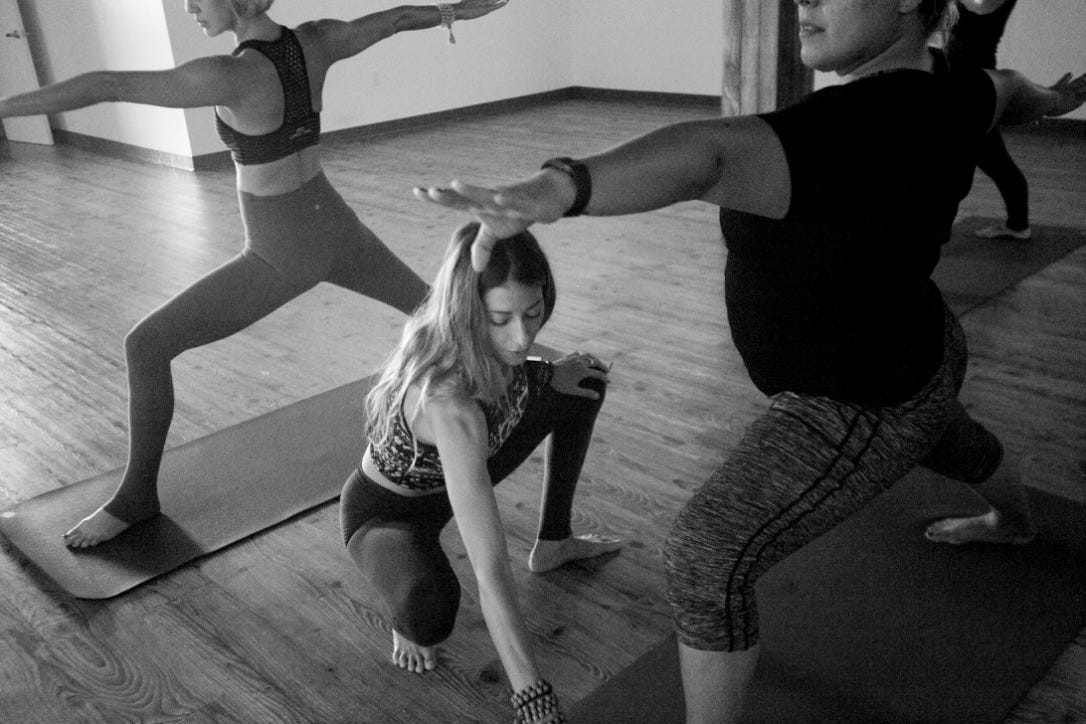What Type of Movement is Best?
There are so many options when it comes to working out- Pilates, Hiit, Yoga, Cycling, Walking, Zumba, Martial Arts, Barre and more! How do you choose what's best for you?!
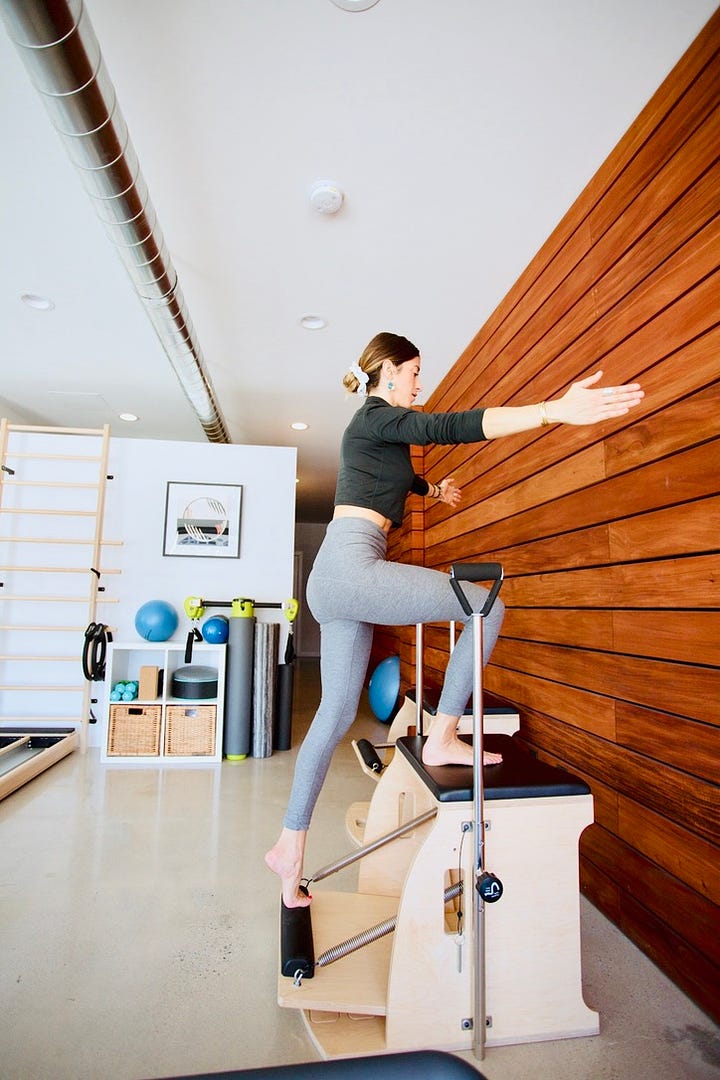
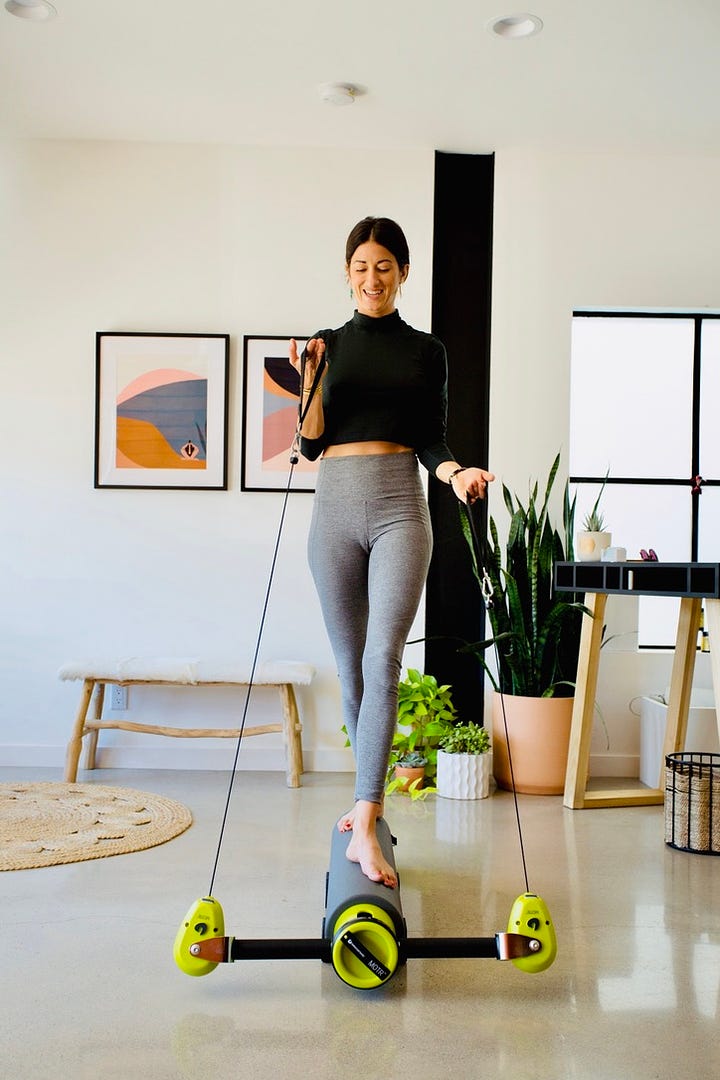
Step 1: What are your goals? What are you looking to achieve?
This is one of the most important questions that you need to ask yourself. There is no right answer here, but you do need to put some thought into it in order to get the results you desire. Choosing anything in wellness without thought and intention will only prolong your goal. What workouts you choose to do and how you choose to move your body is highly specific to your needs, desires, and personal circumstances.
Step 2: Do you have any aches, pains, injuries, or limitations?
If you have any of the above, I highly recommend starting with private sessions or with a physical therapist that specializes in movement.
Your body is worth the long term investment of private sessions with either a coach, trainer, instructor, or PT. Trust me. At 29 my back felt like I was 75, now at 41 I feel better than ever as a result of spending the time and money to get good care.
Having back pain, or any pain, just means you need to increase your awareness of that area. Learn more about it. Awareness is learned through the help of a coach/trainer/professional and over time.
A lot of pain in your body can be alleviated with the proper tools and some patience.
Step 3: What is your experience level with your desired type of exercise?
After evaluating your goals, let’s say you decide that Pilates is your choice. Great. Now evaluate your experience—do you have any? If you’ve never done a particular class before, even if you’re athletic and coordinated, you should either take the intro level class and inform the instructor that you are new OR choose to take a private session first.
This will set you up for so much more success. Don’t waste your time or money in a class trying to “figure it out”. Sure, you can do that, I’ve done that, but it doesn’t mean it’s the best choice. Most of the time people want to jump into their desired level of class or their perceived level—meaning they think they should be in the more advanced class or might find themselves trying to “keep up” with the more advanced students.
Do yourself a favor and start as a beginner.
If a private session is what you need first, do a little research, and book your private session. Privates are like long term investments. Invest in your body! Learn the proper technique. Plus, you don’t have to do them forever, even just 3 private sessions for someone with no other issues should be enough to set you up to take a group class.
Step 4: Can I see myself doing this type of movement consistently?
It’s important that whatever choice you make is something that you can currently maintain and keep up. It’s easy to get overly eager and to stack your plate too high when it comes to movement—especially if your goal is weight loss.
All too often I hear my clients, friends, and family working out to lose weight for an event—this isn’t the best plan. Sure, you can try and look your best for important events, but that shouldn’t be the motivating factor to move your body. It should be for you. Not an event.
The event timeline of getting in shape encourages failure. It sets you up to to be inconsistent because once the event occurs, you feel like you’re “done”. On top of that, the program to “get in shape” is usually too aggressive and unrealistic—it’s not something you can maintain and keep up for the long haul—thus, you’re on and off again.
Choose movement that your body can sustain for this phase and goal in your life.
Step 5: Make a plan and give it time.
I can’t emphasize this point enough. As always, time is my most important preach. Once you’ve made a realistic plan, let’s use the Pilates example, execute and commit!
Ex: Look at your schedule and determine how many days you can afford, both financially and time wise, and book those classes for the week.
Commit. Schedule. Execute.
Now give it time. With any type of movement you need to give it time and you need to show up consistently. At least 2 x per week for a minimum of 3-6 months. Give your body a chance to see and feel how this type of movement works for your body. How does your body feel now versus before adding in the movement?
Step 6: Find a healthy relationship with your Ego.
The ego often gets a bad rap. I’m not here to say that you need to leave your ego at the door, but you do need to balance your ego—put it in check, basically. Get to know your ego and how it works with you. The more aware you are of your ego, the more you can negotiate with it, set it aside, or use it to your advantage.
Different scenarios require different demands of your ego. If you can find a healthy relationship with your ego, not only will your movement thrive, but your overall health and wellness will so too. If you understand that your ego can work both ways, both to encourage and discourage you, you can use it accordingly. If you understand how your ego responds to different situations, you know what to expect and you can better prepare. It’s like any relationship, it needs time and care to thrive.
Let’s say you want to run a half marathon and you’ve never done this type of thing before, many would consider you totally un-athletic, and this is way out of your comfort zone. Despite the chatter in your mind, you get online and you start doing some research. After 30 minutes of research you start to the hear voice in your head discouraging you… “you can’t do this”… “are you crazy?!”… “you’ve never committed to anything like this before, what makes you think you can do it now?”… “like you’re really going to do it”…. “what will everyone think?”… “you’re going to be the slowest person out there”… “what if you can’t finish??”…You never sign up for the marathon, your ego wins.
This is an example of your ego discouraging you, getting in your way. Let’s flip it now to a version where your ego is your ally.
Same scenario, different ego. After 30 minutes of looking online you are inspired! Rather than discouraging you the voice encourages you. You hear things like… “yes! you can do this!”… “all different types of people have finished, you can too”… “this looks like a fun challenge that you can totally do.”…. “You can always walk if you get tired, as long as you cross the finish line, you’re good!”… “But even if you don’t, who cares!? It’s not like you’re trying to be a professional.”… “Do it! Sign up!” You sign up and run/walk your marathon successfully.
This is a healthy ego. A present ego. One that encourages you with compassion, within your limits. An ego that helps you accomplish your goal, not the other way around.
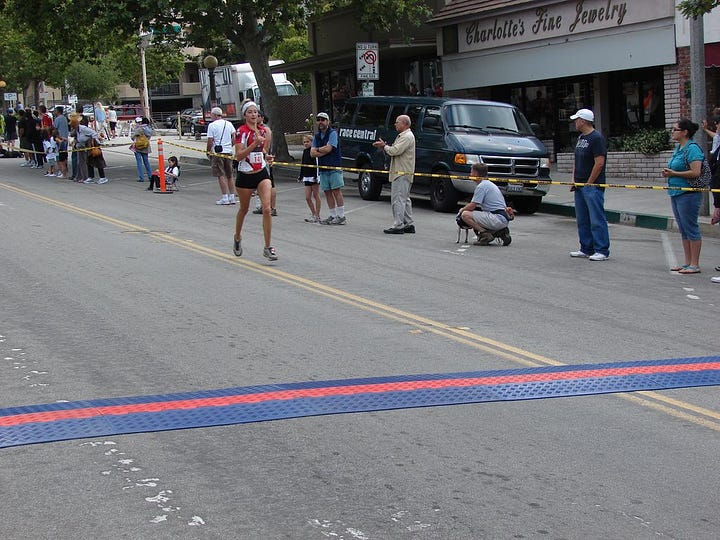
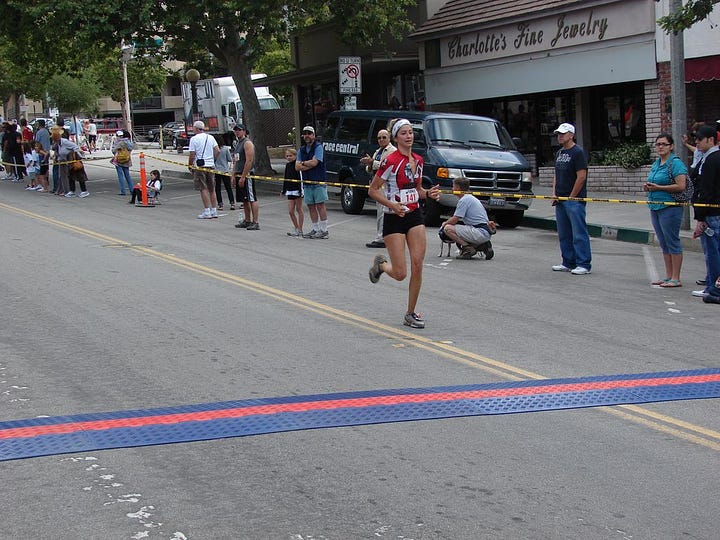
This is me crossing the finish line after a healthy relationship with my Ego. It was the Mt. Wilson Trail Race—one of the hardest things I’ve done. But it was amazing! I had the best race!
I trained with a coach and a team, I committed, I showed up, I worked with friends at my same level that encouraged me while also keeping me company during long practices. I ate healthy foods, I cared for my body in the best way I could. It was a great day that I’m super proud of to this day. It felt really good crossing that finish line so strong! My coach at the time, Eric LeClair, who is no longer with us, was fantastic. One of the best coaches that I’ve had.
A few years prior I completed my first marathon. (26.2 miles in case you were curious 😉 ). But it’s not my proudest moment. Definitely not a good race. Or, at least that’s what I thought back then. And while now I can see that I did an amazing job, at the time, my ego got the best of me in all the ways.
With my training, I overtrained and didn’t have the help of a coach. I thought I could do it on my own. Further, when I wasn’t performing to my liking, rather than recruiting help, I was hard on myself saying things like “I must just suck at running”, and then only pushed myself harder. When my body started showing signs of distress, rather than listening, I pushed her harder yet again. Irritated she wasn’t performing to my liking.
In the months approaching the race, I put so much pressure on myself to perform at a high level, forgetting the fact that I was recently diagnosed with MS, not a runner, had just started exercising again, and was taking a weekly medication that made me very fatigued. All I could see was my lack of performance.
I crossed the finish line, barely! It took sheer will, mind of matter, for me to cross that line. I was dying! I could hardly stand, literally.
Worst of all, after all that time, commitment, and hard work, I didn’t feel proud. I felt mad. Disappointed. Like I failed. It took me way longer than I wanted it too and I was embarrassed of my time.
Luckily my friends and family were there to support me, they helped me see my accomplishment, despite my own feelings.
I look back now and think, for what?!? What was I so stressed about? Why was I applying so much pressure on myself?? Why didn’t I feel proud? Why didn’t I stop running? Why didn’t I listen to my body?
The short answer is my ego.
In retrospect this was yet another sign that I need to work on my ego, but I couldn’t see that at the time. Actually, I know I couldn’t. It was also an example of me living in the past having never reconciled my competitive spirit into something more useful now that I wasn’t a 13 year old gymnast. I was ignoring my pain, that’s how I was trained, and only applying more pressure. Refusing to acknowledge any weakness. Turns out, I don’t suck at running, I was severely anemic from over training and my medication. It was a wonder that I could even stand, let alone complete a marathon.
No wonder I felt like shit. Again, it wasn’t that I wasn’t good at running, it was my body being depleted of vital minerals, me not listening, and not asking for help when I needed it.
Back to the steps…
Step 7: Check in and don’t quit!
Is your choice working out for you? Are you able to stay consistent? Does your body feel better? Are you seeing small wins towards your larger goal? Do you feel better after? These are the types of questions you want to ask yourself.
If the answers are no, then maybe it’s time to tweak the program—not time to quit! Rather than totally quitting, make small adjustments. Fine tune your plan.
Ask for help if you need it. We all have an active friend or two, and if you don’t, there are people like me all over the place that can help you, you just have to ask. With little adjustments over time you can evolve your movement plan and program just as most things evolve over time.
What I did when I was 10 is different from 21 and even different again at 40. The one consistent thing?! Me. I’ve shown up for my body over and over again. I’ve evolved with my body over time and I hope you choose to do the same for yours.




